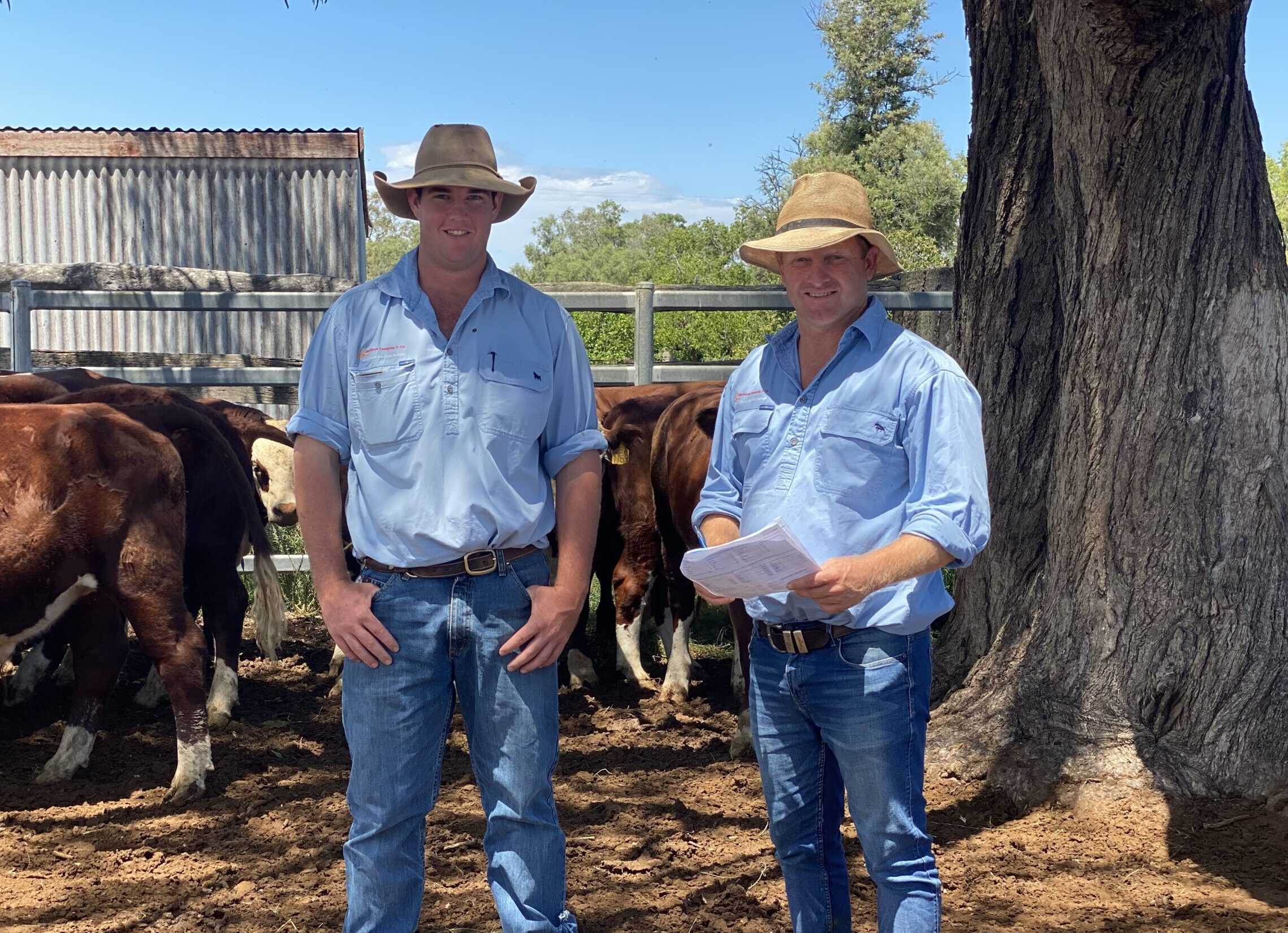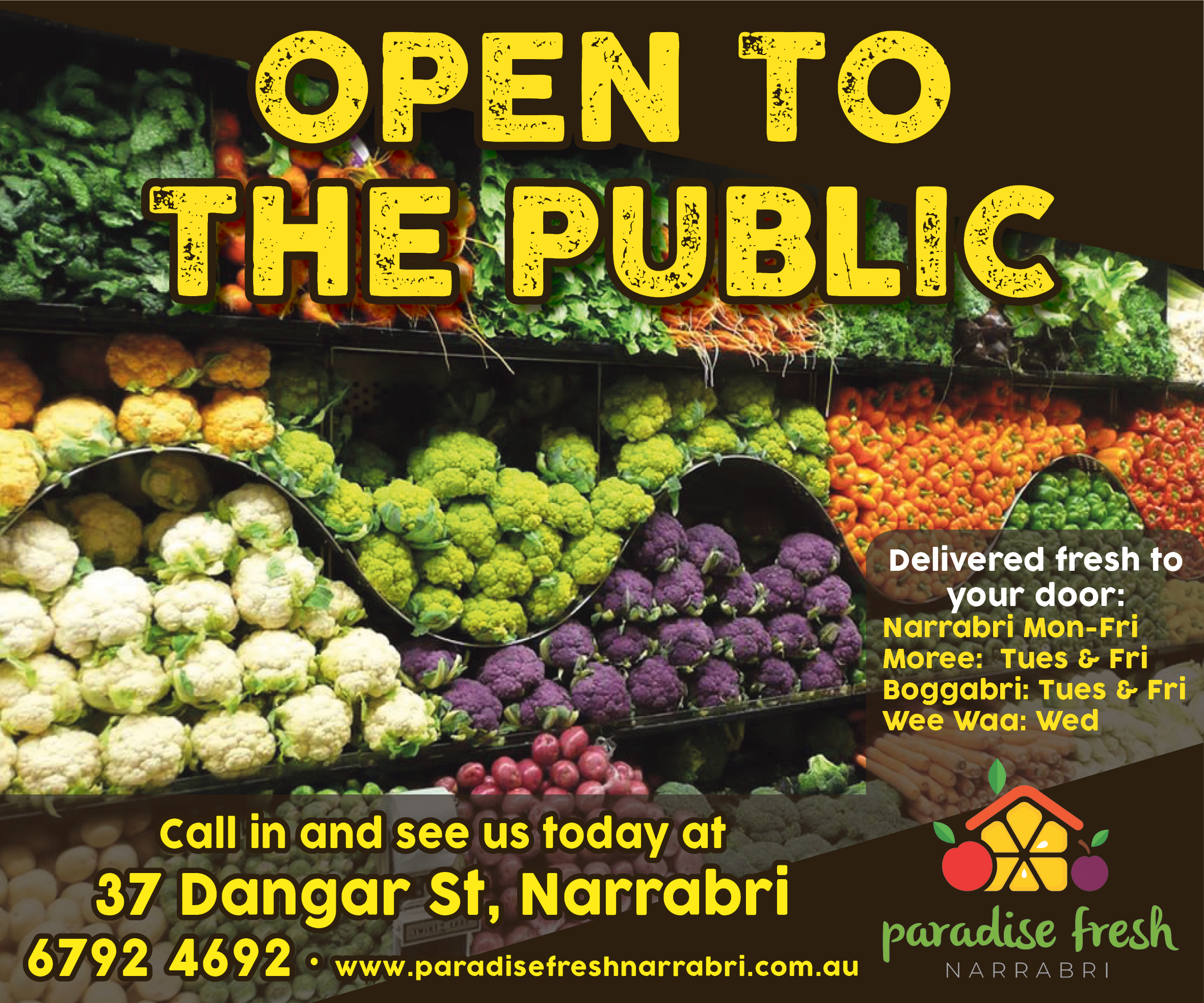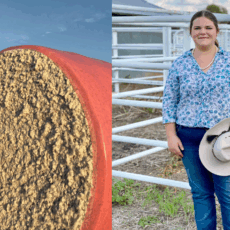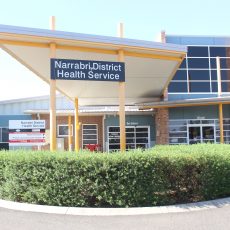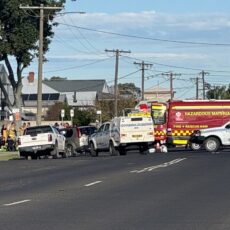Cattle prices have been at record high levels, with demand for stock soaring since decent rainfall in 2020 urged the land back to life after years of drought.
The rain has continued to fall and deliver favourable seasons, meaning cattle have been in hot demand as graziers try to rebuild their herds and make the most of healthy paddocks that are bursting at the seams with an abundance of feed.
“The cattle market opened up this year quite strong in the southern weaner sales, re-stocker activity was very, very high,” said Hunter Harley, livestock and branch manager for Davidson Cameron and Co, Narrabri.
“This is the result of the good seasons in the eastern seaboard and rains from north of Victoria and into NSW and Queensland in particular.
“A lot of cattle went back that way, with a lot of the Victorian weaners purchased by northern operators going back to Queensland and NSW.
“Thousands of cattle were sold each week. In the last week to 10 days, we’ve seen COVID raise its ugly head and affect pricing to a degree, as has been the case earlier with the sheep market,” Mr Harley said last week.
“It’s just a flow-on down the line as far as abattoirs and processor’s ability to run at full capacity.”
Mr Harley said the spread of COVID had caused a shortage of workers in various parts of the supply chain, as people took time off to isolate or recover from the virus.
“Really, the workforce, or lack of, has severely impacted what can be processed,” said Mr Harley.
“As a result, we’ve seen that flow on into the market and even into the store market where we’ve seen some softening of prices and definitely with some heavier kill cows as opposed to pre-Christmas,” said Mr Harley.
“We are hearing some abattoirs in the south are running at 75 per cent now, so we’re on the way north.
“Once we get back to 100 per cent, I can’t see, personally, why we won’t see prices back to where they were three weeks ago before Omicron really took hold of the workforce.
“It’s impacting people in processing, and even people who are retailing the beef at Woolworths, or butchers who might have been crook and not at work, people who pack shelves are not at work.
“It’s not just the beef, lamb, chicken, protein sector but even other products, you go to the supermarket and you think, ‘Why is it not there?’ – well it’s probably somewhere in the supply chain but there’s a lack of staff.”
While parts of the economy have been hit hard by COVID’s ripple effects, the outlook for agriculture has remained mostly positive.
“I think we’ve been operating at record levels for some time now, and it’s been great because our breeders, our breeding clients, have really needed the pricing to be where it’s been for the last couple of years to get back on their feet because they spent a huge amount of money keeping their core breeders alive for an extremely long time during the drought,” said Mr Harley.
“But I do think there will be a rebalancing of pricing towards the end of the year – that’s just my opinion; there won’t be any crashing, but you will see a softening and then a rebalance where everyone is still getting a good price, but we might not see the highs we’ve been seeing in the last six months.”
While many people in agriculture have had to embrace online technology during COVID due to restrictions such as border closures impacting their ability to travel to sales, Mr Harley said the sale yards are still popular despite many listings being online.
“Definitely, sale yards still have their place,” he said.
“We’re finding that with the beef boom – the highest prices have been at auction, whether it’s online or at the yards.
“With the beef boom, there’s been times people have been unsure of the cattle’s worth because the next week they’ve jumped $100 or $200, so it doesn’t really settle at a level for too long.
“Once upon a time, you knew a weaner steer was worth $2 per kilogram and for six months they were probably 10 cents either side of $2 (per/kg), whereas now we’ve seen a dollar and $2 a kilo jumps in 12 months.
“It’s been quite interesting to watch, and many people have probably never seen the incline of pricing happen as quickly in their lives.”
Mr Harley works with graziers and farmers across the North West, and he said there’s a feeling of optimism in the air about the year ahead.
“I think morale is quite high because it’s a great time to be in agriculture where a lot of commodities are worth quite a good price,” he
said.
“So even with the harvest, unfortunately, getting wet, people have probably never seen their low-grades worth as much and in some cases have never grown as much as what they’ve grown in the last season.
“So, there’s certainly still been a return there, and it’s looking good for their summer crops as well.
“I think everyone is pretty upbeat, we have a lot of mixed farming clients, so they’re not all into one enterprise, and it’s good that they’re getting a little win in all assets of their business.”
Mr Harley said the rural property market has also been booming since the change in season, with many investors attracted to the agricultural sector as well as city-slickers who are seeking a quieter life away from COVID restrictions and crowded apartment living.
“The rural property prices are also strong on the back of it,” said Mr Harley.
“We always see premier farming country come up and sold in our area, but the demand out there and the faith in the protein sector, for example, meat has really helped interest in some mixed farms that maybe lend themselves a bit more to grazing.
“We’ve got a huge demand for grazing property, especially smaller acreages, say 500 acres within 50 kilometres of Narrabri.
“There’s so many people who are working out of the agricultural sector but want to get into it, and not just for the lifestyle but also to make a good little living on the side.
“There’s a diverse spectrum of people looking to invest in agriculture.
“In the lifestyle market, there are people who just want to get out of the city, people who were just sick of being cooped up in isolation when there were restrictions.
“There has been a lot of demand, and it’s made some country that might be considered unfavourable, and is a little bit more isolated – sell.”
To order photos from this page click here

